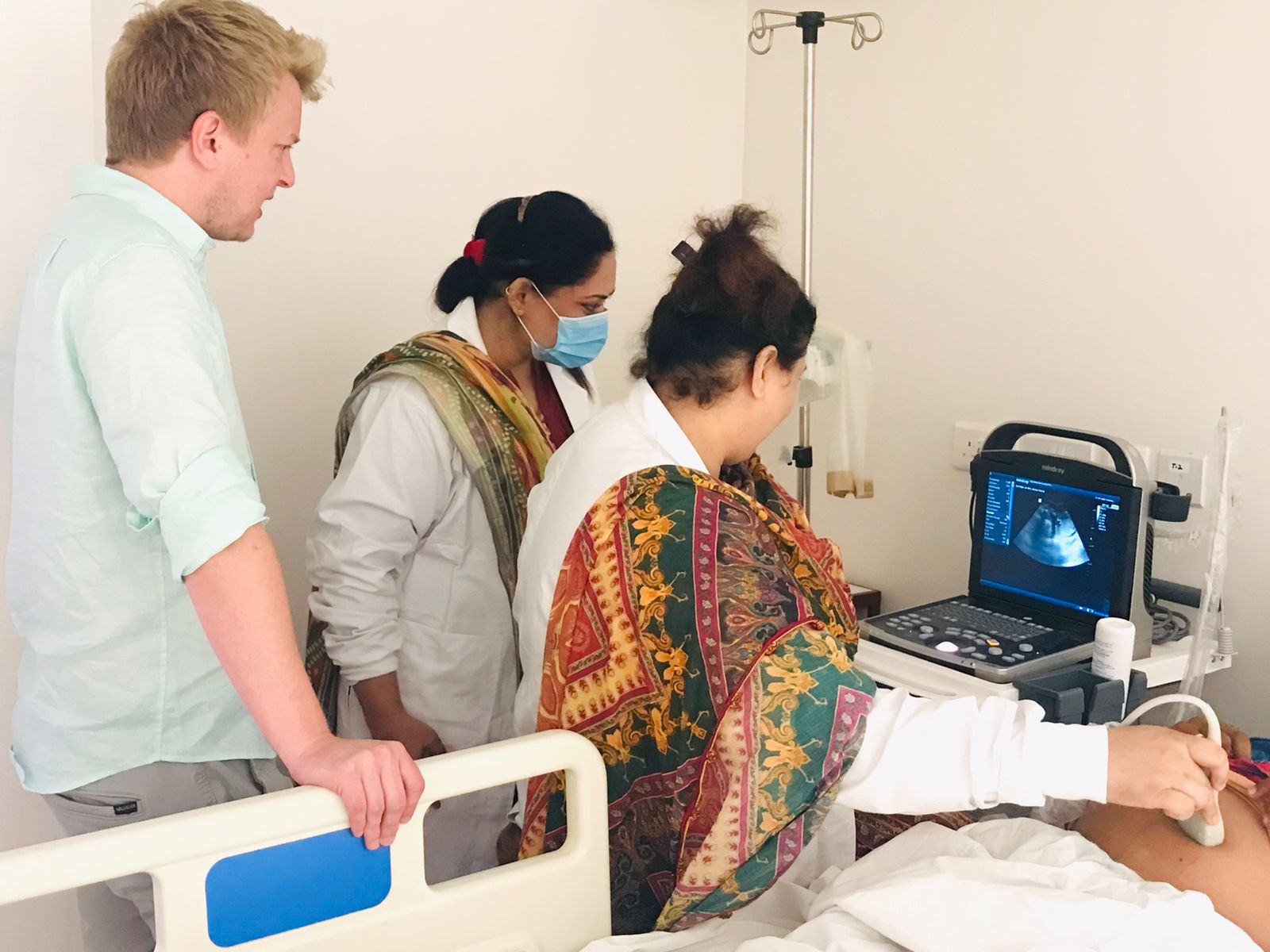Cerebroplacental Ratio (CPR) - Training
Date: July 16-17, 2023
Venue: Matiari Research and Training Centre
Trainer: Dr. Semual Dockery, PhD, Epidemiologist and Obstetrician, Oxford University
Trainees: Dr. Romila Sahan and Dr. Razia Khowaja


Introduction:
The training on Cerebroplacental Ratio (CPR) was conducted on the 16th and 17th of July. The session was facilitated by Dr. Semual Dockery, a highly qualified professional from the UK's Oxford University. Dr. Dockery holds a Ph.D. in Epidemiology and is an Obstetrician with extensive expertise in the field.
CPR (Cerebroplacental Ratio): Cerebroplacental ratio (CPR) is an essential obstetric ultrasound tool used to predict adverse pregnancy outcomes in both small for gestational age (SGA) and appropriate for gestational age (AGA) fetuses. The CPR calculation involves dividing the Doppler flow in the middle cerebral artery (MCA) by the Doppler flow in the umbilical artery (UA). This ratio helps in ruling out intrauterine growth restriction (IUGR) in fetuses.
Purpose of CPR Calculation:
The primary purpose of calculating CPR is to identify and monitor the risk of intrauterine growth restriction in fetuses. By assessing the ratio between MCA and UA Doppler flows, healthcare professionals can gain valuable insights into the fetal well-being and the potential for adverse outcomes during pregnancy.
Doppler Findings in IUGR:
In cases of intrauterine growth retardation (IUGR), specific Doppler findings can indicate a compromised fetal condition. The spectral Doppler waveform of the umbilical artery may demonstrate a loss of diastolic flow. Additionally, an observation of increased pulsatility in the umbilical vein may be seen. Both of these findings are indicative of severe IUGR, and it is crucial to inform a perinatologist immediately upon identification.
Significance of the Training:
The training on CPR holds immense value for the attendees, as CPR calculation is not a common practice in general obstetric care. Equipping healthcare professionals with the knowledge and skills to perform CPR assessments can significantly improve the ability to detect and manage intrauterine growth restriction, thus reducing the risk of adverse pregnancy outcomes
The training conducted by Dr. Semual Dockery on Cerebroplacental Ratio (CPR) proved to be highly beneficial for the attendees. Participants gained a comprehensive understanding of how to calculate CPR and its significance in predicting adverse pregnancy outcomes, particularly in cases of intrauterine growth restriction. By incorporating CPR assessments into obstetric care, healthcare practitioners can enhance their ability to provide early interventions and improved care for expectant mothers and their fetuses.

